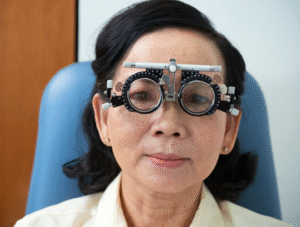Overview
Haemochromatosis is a hereditary condition that causes excessive iron accumulation in the body. In Korea, early diagnosis and treatment are crucial to prevent organ damage, as awareness of this genetic disorder has increased and specialized healthcare services are available in major hospitals.
What is Haemochromatosis?
Haemochromatosis is a genetic disorder caused primarily by mutations in the HFE gene, which leads to excessive iron absorption from the diet. The excess iron is stored in vital organs such as the liver, heart, and pancreas, potentially causing serious health issues over time. Both men and women can be affected, but men often show symptoms earlier due to lack of natural iron loss through menstruation.
Symptoms
- Fatigue and general weakness
- Joint pain, especially in the hands and knees
- Abdominal discomfort or enlargement
- Liver dysfunction and enlargement
- Skin darkening or bronzing
- Irregular heartbeats or palpitations
- Development of diabetes mellitus
Causes
Haemochromatosis is primarily caused by genetic mutations in the HFE gene. These mutations disrupt the body’s normal iron regulation, causing excessive absorption. Less commonly, secondary causes such as repeated blood transfusions or chronic liver disease may contribute to iron overload.
Risk Factors
- Family history of haemochromatosis
- Being male, as symptoms appear earlier and more severely in men
- Age, with most cases becoming symptomatic between 30–50 years
- Ethnic background, with higher prevalence in individuals of Northern European descent, though cases in Koreans have been increasingly identified
Complications
If untreated, haemochromatosis can lead to:
- Liver cirrhosis and liver cancer
- Heart disease, including arrhythmias and heart failure
- Diabetes due to pancreatic involvement
- Arthritis or joint damage
- Fatigue and decreased quality of life
Prevention
While hereditary haemochromatosis cannot be completely prevented, early detection and regular monitoring are essential. Preventive measures include:
- Genetic testing for individuals with a family history
- Routine blood tests to monitor iron levels
- Limiting iron-rich foods and avoiding unnecessary iron supplements
- Regular health checkups to detect early organ damage
Treatment Options in Korea
Treatment in South Korea focuses on reducing iron levels and preventing complications:
- Phlebotomy (blood removal): Regular removal of blood is the most common treatment to lower iron levels safely. Most major hospitals, including Samsung Medical Center, Asan Medical Center, and Seoul National University Hospital, offer this service.
- Iron chelation therapy: For patients unable to undergo phlebotomy, medications such as deferoxamine or deferasirox are available to bind and remove excess iron.
- Lifestyle and dietary adjustments: Limiting consumption of red meat and vitamin C-rich foods can help reduce iron absorption.
- Management of complications: Treatment for liver disease, diabetes, or cardiac issues is coordinated by specialized departments in leading Korean hospitals.
- Regular monitoring: Blood tests, MRI scans, and follow-up consultations ensure that iron levels remain within safe ranges and organ function is preserved.













